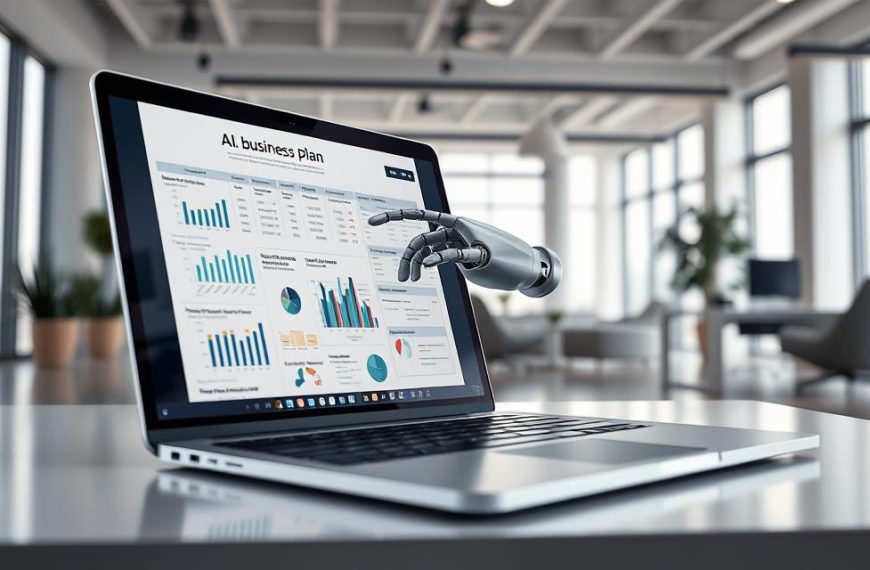In today’s digital age, rapid advancements have transformed the way we live and work. Yet, these innovations often come at a cost. Civil liberties, particularly privacy and security, face unprecedented challenges.
According to the ACLU, technological innovation has outpaced protections. This imbalance threatens free speech, equality, and personal freedoms. As Chief Justice Roberts noted, handheld data deserves constitutional safeguards, yet these protections remain unclear.
The rise of surveillance capitalism, as described by Zuboff, further complicates the landscape. Companies collect vast amounts of information, often without consent, eroding individual control. This shift raises critical questions about the balance between progress and rights.
Emerging solutions, such as decentralized systems and GDPR compliance, offer hope. However, the journey to safeguarding privacy and security in this evolving era remains complex and ongoing.
Introduction: The Intersection of Technology, Privacy, and Security
The digital era has reshaped the way we interact with information. Every day, 2.5 quintillion bytes of data are created, highlighting the scale of our digital footprint. This explosion of information has profound implications for privacy and security.
Events like the Snowden revelations and the Cambridge Analytica scandal underscore the risks of unchecked data collection. These incidents exposed how personal information can be exploited, raising urgent questions about individual rights.
Many apps and platforms present a paradox: users trade privacy for convenience. While these tools simplify daily tasks, they often collect more data than necessary. This trade-off has become a defining challenge of the digital age.
The General Data Protection Regulation (GDPR) has set a global standard for privacy protections. Its influence extends beyond the EU, inspiring similar laws worldwide. This shift reflects growing awareness of the need to safeguard personal information.
The ACLU has outlined a four-point strategy to protect digital rights:
- Strengthening legal frameworks for data protection.
- Promoting transparency in information collection.
- Empowering individuals to control their digital footprint.
- Advocating for accountability in cases of misuse.
As debates around privacy continue, the need for robust solutions remains critical. Balancing innovation with individual rights is essential for a secure digital future.
How Does Technology Affect Privacy and Security?
The rapid growth of digital tools has raised concerns about personal information. From smartphones to smart home devices, data collection has become pervasive. This trend impacts individual rights and reshapes the boundaries of privacy.
The Rise of Data Collection
Every interaction with digital tools leaves a trace. Browsers log searches, clicks, and visited sites. Smart devices record user actions, creating a detailed profile. This information is often collected without explicit consent.
For example, facial recognition systems show significant bias. According to the ACLU, error rates are 34% for darker-skinned women compared to 0.8% for light-skinned men. Such disparities highlight the risks of unchecked data collection.
iOS 17’s App Tracking Transparency offers a solution. This feature reduced data collection by 40%, empowering users to regain control over their information.
Surveillance and Monitoring
Surveillance practices have expanded beyond traditional methods. Ring doorbell networks, for instance, share footage with over 2,100 police departments. This raises questions about access and accountability.
China’s Social Credit System takes monitoring further. It reduces privacy to behavioral scoring, influencing access to services. Such systems contrast sharply with the EU’s AI Act, which bans social scoring.
| Region | Approach | Impact on Privacy |
|---|---|---|
| EU | AI Act bans social scoring | Strengthens individual rights |
| U.S. | Surveillance capitalism | Erodes personal control |
These differences highlight the need for global standards. Balancing innovation with security and rights remains a critical challenge. For more insights, explore how personal data has become a commodity in the digital age.
The Growing Threat of Data Breaches
The digital landscape is increasingly vulnerable to cyber threats. Data breaches have become a pressing concern for organizations worldwide. These incidents not only compromise sensitive information but also pose significant financial and reputational risk.
In 2024, the UnitedHealth breach resulted in a staggering $1.6 billion loss due to compromised patient records. Similarly, MIT research revealed that the average cost of a breach rose by 15% year-over-year, reaching $4.45 million per incident. These figures underscore the growing risk faced by companies across industries.
Notable Data Breaches in 2023-2024
Several high-profile breaches have highlighted the scale of the problem. In 2023, T-Mobile suffered a breach affecting 37 million customers, while Xfinity exposed 36 million user accounts. In 2024, Microsoft faced a critical Azure vulnerability, further emphasizing the need for robust security measures.
Supply chain attacks have also emerged as a significant threat. SaaS providers like Okta became targets in 2023, compromising information across multiple organizations. These incidents reveal the interconnected nature of modern security challenges.
On the dark web, stolen data is a lucrative commodity. Medicare IDs fetch up to $1,000, while credit cards sell for as little as $50. This pricing reflects the high risk associated with sensitive information and the need for stronger protections.
As companies navigate this evolving threat landscape, proactive measures are essential. Addressing vulnerabilities and enhancing security protocols can mitigate the impact of data breaches and safeguard critical information.
The Role of Centralization in Security Vulnerabilities
Centralized systems dominate modern infrastructure, but they come with inherent risks. These systems, while efficient, often create single points of failure. This structure makes them vulnerable to breaches and outages, impacting millions of users.
Decentralized systems, on the other hand, distribute data across multiple nodes. This approach reduces the risk of large-scale failures. According to a 2023 IBM study, decentralized storage lowers breach risk by 83%.
Centralized vs. Decentralized Systems
Centralized systems, like those used by Equifax, have faced significant breaches. In 2017, Equifax exposed the personal data of 147 million people. This incident highlights the risks of storing sensitive information in a single location.
In contrast, Bitcoin’s decentralized model has remained hack-free for over 14 years. Its blockchain technology ensures data integrity and security across a distributed network.
Another example is the AWS outage in 2021, which disrupted services globally. Decentralized systems like IPFS (InterPlanetary File System) offer greater resilience. They ensure uninterrupted access even during network failures.
IndiaStack, developed by Nandan Nilekani, showcases the potential of decentralized systems. It enables over 1 billion digital identities, empowering individuals with control over their data.
| System Type | Example | Key Advantage |
|---|---|---|
| Centralized | Equifax | Efficient data management |
| Decentralized | Bitcoin | Enhanced security and resilience |
The Finternet model further illustrates the benefits of decentralization. It reduces cross-border settlement times from 3-5 days to just 200 milliseconds. This efficiency underscores the potential of decentralized systems in modern finance.
As organizations navigate the digital landscape, the choice between centralized and decentralized models remains critical. Balancing efficiency with security is essential for building resilient systems.
Emerging Technologies for Privacy and Security
Innovative solutions are reshaping the way we safeguard sensitive information. Among these, Zero-Knowledge Proofs (ZKPs) and Secure Multi-Party Computation (SMPC) stand out as transformative tools. These technologies are designed to enhance security while maintaining user trust.
Zero-Knowledge Proofs (ZKPs)
ZKPs allow one party to prove the validity of information without revealing the data itself. This method is particularly useful in financial transactions and identity verification. By minimizing access to sensitive details, ZKPs help protect data from unauthorized use.
Secure Multi-Party Computation (SMPC)
SMPC enables multiple parties to jointly compute a function while keeping their inputs private. This approach is gaining traction in industries like healthcare and finance. For instance, 23 hospitals are collaborating using SMPC for cancer research, ensuring patient data remains confidential.
Google’s Private Join and Compute is another example. It analyzes encrypted datasets across competitors without exposing raw data. This innovation highlights the potential of SMPC in fostering collaboration while maintaining security.
Meta’s Crypten leverages SMPC to train AI models on encrypted user messages. This ensures that sensitive information is never exposed, even during machine learning processes. However, regulatory challenges remain, particularly in auditing SMPC systems to ensure compliance.
| Technology | Application | Impact |
|---|---|---|
| ZKPs | Financial Transactions | Enhances privacy |
| SMPC | Healthcare Research | Protects sensitive data |
The SMPC market is projected to reach $1.2 billion in 2024, with a 31% CAGR. This growth reflects the increasing demand for technologies that balance innovation with security. As these tools evolve, they will play a crucial role in shaping a safer digital future.
The Importance of Personal Data Custody
Personal data custody has become a cornerstone of digital empowerment. In an era where control over one’s identity is increasingly vital, individuals are seeking ways to safeguard their personal data. This shift reflects a growing awareness of the risks associated with centralized storage and the benefits of self-custody solutions.
Self-custodial wallets, like Ledger Nano X and Argent, are leading this movement. With 6 million units sold, Ledger Nano X has secured $54 billion in crypto assets. Argent’s social recovery feature has prevented $220 million in potential losses, showcasing the value of user-controlled solutions.
Comparing Custody Options
When choosing a custody solution, users must weigh costs and benefits. Coinbase charges a 1.5% custody fee, while Trezor offers a one-time cost of $149. This comparison highlights the financial advantages of self-custody.
“Self-custody is not just about security; it’s about reclaiming ownership of your digital life.”
The EU’s MiCA regulations further emphasize this trend. By 2025, self-custody options will be mandatory, ensuring greater control over personal data. This regulatory shift aligns with the global demand for enhanced security and identity protection.
Addressing Seed Phrase Vulnerabilities
Despite the benefits, self-custody is not without risks. A 2024 survey revealed that 12% of users store their seed phrases digitally, exposing them to potential breaches. Educating individuals on secure storage practices is essential for maximizing the benefits of self-custody.
| Feature | Ledger Nano X | Argent Wallet |
|---|---|---|
| Cost | $149 | Free (with premium options) |
| Security | Hardware-based | Social recovery |
| User Base | 6 million | Prevents $220M in losses |
As the digital landscape evolves, the importance of personal data custody cannot be overstated. Empowering users with tools and knowledge ensures a safer and more secure future for all.
Legal and Regulatory Frameworks for Data Protection
Global efforts to protect personal information have intensified in recent years. Governments and organizations are implementing stricter laws and regulations to safeguard sensitive data. These measures aim to balance innovation with individual rights, ensuring data protection remains a top priority.
The General Data Protection Regulation (GDPR)
The GDPR, enacted in 2018, has set a high standard for data protection worldwide. Since its implementation, fines totaling €4.5 billion have been issued, including Amazon’s record €746 million penalty. These penalties underscore the importance of compliance with regulations.
Article 17, known as the “Right to Erasure,” allows individuals to request the deletion of their data. However, implementing this right has proven challenging. Organizations often struggle with technical and operational hurdles, delaying responses to such requests.
“The GDPR has fundamentally changed how companies approach data privacy, but its enforcement remains a work in progress.”
The Schrems II Ruling
The Schrems II ruling in 2020 invalidated the EU-US Privacy Shield, a framework for transatlantic data transfers. This decision highlighted concerns about U.S. surveillance practices and their impact on EU citizens’ rights. Companies must now rely on alternative mechanisms, such as Standard Contractual Clauses, to ensure legal data transfers.
Brazil’s LGPD and Compliance Costs
Brazil’s Lei Geral de Proteção de Dados (LGPD) has introduced stringent data protection requirements. Multinational companies face an 87% increase in compliance costs due to these new laws. Despite the financial burden, the LGPD reflects a global trend toward stronger regulations.
| Regulation | Key Feature | Impact |
|---|---|---|
| GDPR | Right to Erasure | €4.5B in fines since 2018 |
| CCPA | Consumer Data Rights | Influenced 12 U.S. state laws |
| LGPD | Strict Compliance | 87% cost increase for multinationals |
California’s CCPA has also played a pivotal role in shaping U.S. data protection laws. By 2024, it influenced 12 state-level regulations, creating a patchwork of rules that companies must navigate. This trend highlights the growing emphasis on safeguarding personal information across jurisdictions.
As the legal landscape evolves, organizations must stay informed and adapt to new laws. Balancing innovation with data protection remains a critical challenge in the digital age.
The Ethical Implications of Data Privacy
The ethical dimensions of data privacy have sparked global debates. As digital systems collect vast amounts of personal information, questions about human dignity and individual rights have become central to the conversation. The UN Resolution 73/179 recognizes privacy as a fundamental human right in the digital age, emphasizing its importance in safeguarding personal freedoms.
However, the implementation of this principle varies widely. The ACLU’s lawsuit against the FBI’s Next Generation Identification database highlights the risks of unchecked biometric data collection. This case underscores the need for ethical frameworks to protect individual rights in the face of technological advancements.
Contrasting Approaches to Privacy
The EU’s privacy-by-design mandates require companies to embed privacy protections into their systems from the outset. This approach contrasts sharply with China’s Social Credit System, which uses data to score and monitor citizens’ behavior. Such systems raise significant ethical concerns about surveillance and individual autonomy.
Biometric data collection also presents unique challenges. Kenya’s Huduma Namba and India’s Aadhaar systems illustrate the complexities of balancing convenience with privacy. While these initiatives aim to streamline services, they also risk exposing sensitive information to misuse.
Workplace Surveillance and Ethics
Tools like Teramind, which track 27 productivity metrics, highlight the growing use of surveillance in workplaces. While employers argue these tools improve efficiency, they often infringe on employees’ rights to privacy. This tension between monitoring and trust underscores the need for clear laws and ethical guidelines.
| Region | Approach | Impact on Privacy |
|---|---|---|
| EU | Privacy-by-design | Strengthens individual rights |
| China | Social Credit System | Erodes personal autonomy |
“Privacy is not just a legal issue; it’s a matter of human dignity and respect.”
As the digital landscape evolves, the ethical implications of data collection will remain a critical issue. Balancing innovation with the protection of individual rights is essential for creating a fair and just digital future.
Balancing Convenience and Privacy
Modern digital platforms often prioritize convenience over user privacy. While seamless experiences attract users, they frequently come at the cost of personal control over data. This tension highlights the need for ethical practices in handling user consent.
A study reveals that 92% of users click “Agree” without reading Terms of Service (ToS). The average policy takes 18 minutes to read, creating a barrier to informed user consent. This lack of engagement underscores the challenges in ensuring data privacy.
The Role of User Consent
iOS App Tracking Transparency has empowered users to regain control. According to Flurry Analytics, 62% of users opted out of tracking, signaling a shift toward privacy-conscious practices. This feature demonstrates how transparency can enhance user consent.
However, not all platforms prioritize clarity. Dark patterns, such as LinkedIn’s pre-checked boxes in cookie consent dialogs, manipulate users into agreeing to data collection. These tactics undermine genuine user consent and erode trust.
“Transparency in consent mechanisms is essential for building user trust and ensuring ethical data handling.”
The IAB’s Global Privacy Platform aims to standardize consent signals across ad tech. This initiative simplifies user consent processes, making it easier for individuals to manage their preferences. Similarly, Brave Browser’s privacy-first approach has attracted 18 million users, offering rewards for opting into privacy-focused ads.
- Critique dark patterns in cookie consent dialogs.
- Discuss IAB’s Global Privacy Platform standardizing consent signals.
- Analyze Brave Browser’s success with privacy-first ad rewards.
As digital platforms evolve, balancing convenience with data privacy remains a priority. Ethical practices and transparent consent mechanisms are key to fostering trust and empowering users.
The Future of Privacy and Security in a Digital World
The evolution of financial systems is reshaping the global economy. Decentralized financial systems (DeFi) are at the forefront of this transformation, offering innovative solutions for asset management and financial inclusion. Despite a 42% decline from its 2022 peak, DeFi’s total value locked (TVL) stands at $180 billion in 2024, showcasing its resilience and potential.
One notable example is MakerDAO’s $1.2 billion real-world asset (RWA) portfolio. By leveraging privacy-preserving blockchain oracles, MakerDAO ensures secure and transparent transactions. This approach highlights the role of technologies in enhancing security and trust within decentralized ecosystems.
Comparing Traditional and Decentralized Finance
Aave’s permissionless lending model contrasts sharply with traditional systems like Goldman Sachs. While Aave enables instant transactions, Goldman Sachs requires a 72-hour approval process. This difference underscores the efficiency of decentralized systems in modern business operations.
However, challenges remain. The Financial Action Task Force’s (FATF) “Travel Rule” conflicts with DeFi’s emphasis on anonymity. This regulation mandates the sharing of transaction details, raising concerns about user privacy and the future of decentralized finance.
Regulatory Landscape and Legal Challenges
The SEC’s lawsuits against Uniswap are shaping the U.S. regulatory approach to DeFi. These cases highlight the tension between innovation and compliance, as authorities seek to balance security with the growth of decentralized technologies.
| System | Feature | Impact |
|---|---|---|
| Aave | Permissionless Lending | Instant Transactions |
| Goldman Sachs | 72-Hour Approval | Delayed Processes |
“The future of finance lies in decentralized systems, but achieving a balance between innovation and regulation remains critical.”
As the financial landscape evolves, the integration of decentralized systems will play a pivotal role in shaping the future of global economies. By addressing regulatory challenges and leveraging advanced technologies, these systems can offer secure, efficient, and inclusive solutions for all.
Conclusion: Navigating the Digital Age with Privacy and Security
As digital systems evolve, safeguarding personal information becomes a critical priority. To address this, four key strategies stand out: decentralized architectures, Zero-Knowledge Proofs (ZKPs), strict regulations, and user education. These approaches empower individuals to regain control over their data while enhancing security.
Decentralized systems reduce vulnerabilities by distributing data across multiple nodes. ZKPs ensure sensitive information remains private during transactions. Strict regulations, like GDPR, set global standards for protection. Finally, educating users about their rights fosters a culture of awareness and accountability.
For those seeking greater privacy, tools like Brave Browser and ProtonMail offer robust alternatives to mainstream platforms. These solutions prioritize user protection without compromising functionality.
As Zuboff aptly stated, “Privacy is not about hiding things. It’s about self-possession.” Embracing these strategies ensures a safer, more secure digital future for all.
















